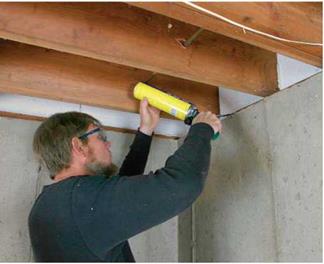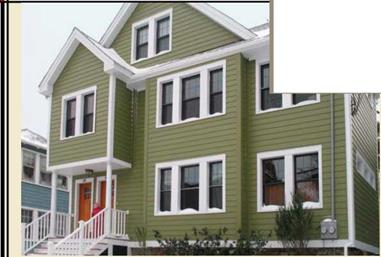Energy Retrofits of All Levels
Paul Eldrenkamp is a Massachusetts remodeler who has performed several deep-energy retrofits. When his clients balk at the high cost of a full retrofit, he sometimes advises them to work in phases. Although it is common to perform energy improvements over time as finances permit, it’s also important to take advantage of upgrade opportunities even if they seem to fall out of sequence. For example, if you have to install new siding or roofing and you do so without installing thick rigid foam underneath, you may regret your shortsighted decision in time. Here’s a general overview of the work to be done, the order in which it should be completed, and the practical alternatives to going deep.
Deep-energy retrofit Many deep-energy retrofits call for insulating a roof to R-60, which can most easily be done by adding 4 in. of rigid polyisocyanurate foam on top of the roof deck and then filling each rafter bay with loose fill or batt insulation. Exterior foam sheathing has the added benefit of reducing thermal bridging through the rafters.
Practical approach It’s much less expensive to install cellulose on an attic floor than to install rigid foam and new roofing. Address air leakage before dragging a cellulose hose into the attic. Seal all ceiling leaks under the existing insulation (for example, at electrical and plumbing penetrations, at utility chases, and at the gaps between partition drywall and partition top plates). It’s also important to be sure that there are no air leaks at the perimeter of the attic, where the ceiling air barrier meets the wall air barrier.
Performance comparison While there is no upper limit on the R-value that can be achieved when installing foam on top of the roof sheathing, the maximum R-value of attic-floor insulation depends on the available height at the perimeter of the attic. Achieving R-60 requires about 16 in. of cellulose.
Cost comparison Attics with easy access are easier and cheaper to retrofit than cluttered attics with lots of penetrations that need to be sealed. From a material standpoint, the practical approach is almost always more economical. For any given R-value, poly- isocyanurate costs from three to five times as much as cellulose insulation. Needless to say, adding rigid foam on top of the roof sheathing includes significant expenses for roof demolition, new roof sheathing, and new roofing—costing between $3 and $5.80 per sq. ft.
Deep-energy retrofit After addressing any moisture issues in the basement, many deep – energy retrofits call for basement walls to be insulated to R-20, requiring the addition of 4 in. of XPS insulation or about 3 in. of
Pile it on. If adding rigid foam on top of the roof sheathing isn’t an option, a less expensive option is blowing cellulose on an air-sealed attic floor. The more insulation, the better.











Leave a reply